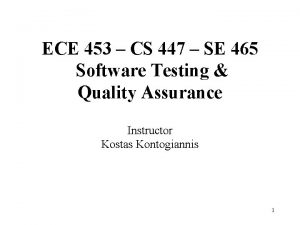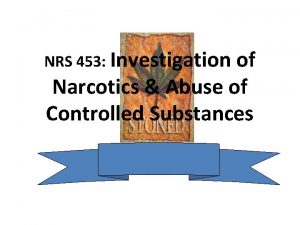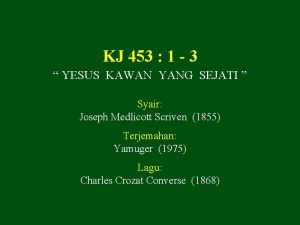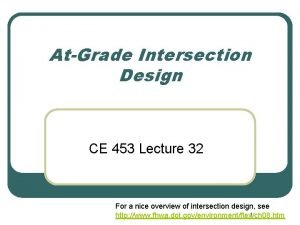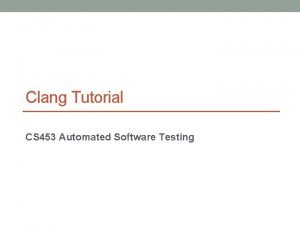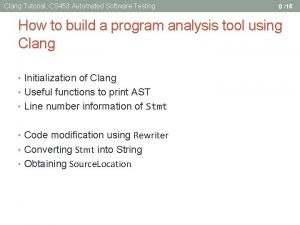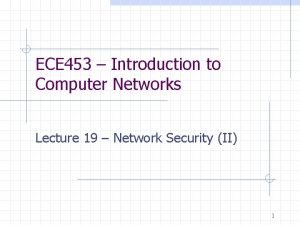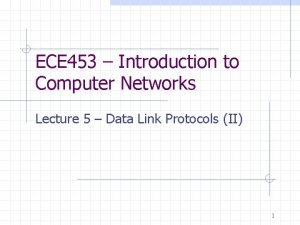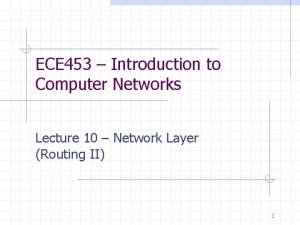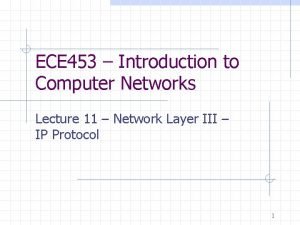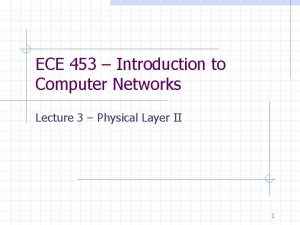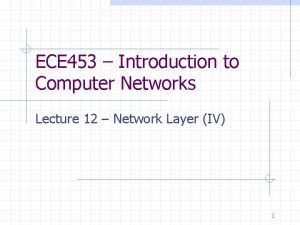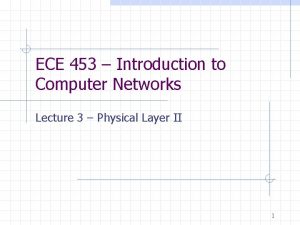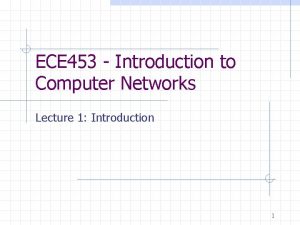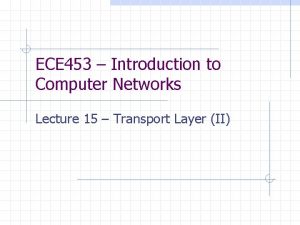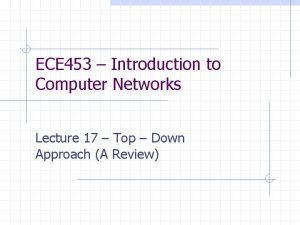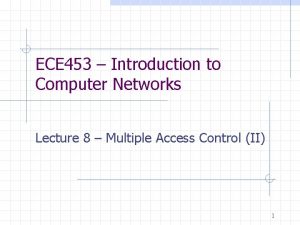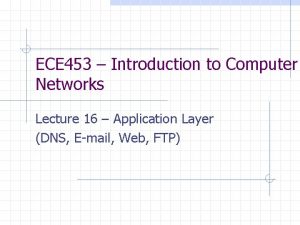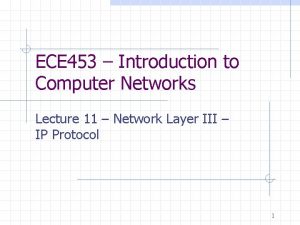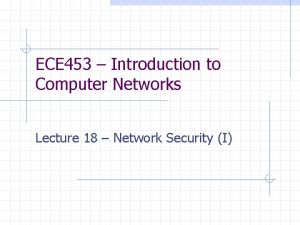ECE 453 Introduction to Computer Networks Lecture 7
















- Slides: 16

ECE 453 – Introduction to Computer Networks Lecture 7 – Multiple Access Control (I) 1

Broadcast vs. PPP Broadcast channel = multiaccess channel = random access channel Broadcast n n LAN Satellite network PPP n n WAN (router-router lease line) Home user ISP 2

Delay Packet experiences delay from end to end Nodal delay = processing delay + queuing delay + transmission delay + propagation delay transmission A propagation B nodal processing (processing delay) queuing 3

The Channel Allocation Problem Static Channel Allocation in LANs and MANs n n FDM or TDM Problems w Fewer than N users n A valuable chunk of time (TDM) or bandwidth (FDM) is wasted w More than N users n Some users are denied (even if another user is idle) w Exactly N users n n Idle users waste bandwidth e. g. bursty traffic Dynamic Channel Allocation in LANs and MANs 4

Five Assumptions for Dynamic Channel Allocation Station Model n n N independent stations generating frames Once a frame is generated, the station is blocked until the frame has been transmitted Single Channel Assumption n n A single channel is available for all communication All stations are equivalent Collision Assumption n n If two frames are transmitted simultaneously, they overlap in time and the resulting signal is garbled. This event is called a collision. All stations can detect collisions. Time Assumption n n Continuous time Slotted time Carrier assumption n n Carrier Sense (LAN) No Carrier Sense (Satellite) 5

Multiple Access Protocols ALOHA Carrier Sense Multiple Access Protocols Collision-Free Protocols Limited-Contention Protocols Wireless LAN Protocols 6

Some Terminologies Contention systems n Systems in which multiple users share a common channel in a way that can lead to conflicts Throughput n n The maximum continuous traffic rate that a device can handle without dropping a single packet. Measured in terms of the number of frames per second at a given frame size Frametime n Time used to transmit a frame (frame_size/data rate) 7

ALOHA Pure ALOHA n n n 1970, Norman Abramson, U. of Hawaii Users transmit whenever they have data When collision occurs, wait for a random amount of time and send again Slotted ALOHA n n 1972, Roberts Divide time into discrete intervals A computer is not permitted to send until the beginning of the next slot Doubles the maximum throughput 8

*ALOHA – Performance Analysis Poisson process (1837) n n n Simplest model for arrivals into a queue system the probability of an arrival in a small interval of time depends only on the size of the interval The probability that k frames are generated during a given frame time follows the Poisson distribution 9

CSMA – Carrier Sense Multiple Access (LAN) 1 -persistent n n n When idle, transmit a frame When busy, continuously sensing When collision, wait for a random amount of time Non-persistent n n n When idle, transmit a frame When busy, wait for a random amount of time When collision, wait for a random amount of time then re-sense p-persistent n n Slotted channels When idle, transmit with a probability p, defers until the next slot with probability 1 -p CSMA with collision detection (CSMA/CD) n n As soon as a collision is detected, abort the transmission Basis of Ethernet LAN 10

A Worst Case Scenario 11

Collision-Free Protocols Assumption n n N stations with a unique address from 0 to N-1 Propagation delay is negligible The bit-map protocol n A reservation protocol: the desire to transmit is broadcast before the actual transmission Binary countdown 12

Limited-Contention Protocols ALOHA n n Low load: improved efficiency High load: high delay Collision-free protocols n n Low load: high delay High load: improved efficiency New protocol? – limited contention protocol n n n Uses contention at low load Uses collision-free at high load Adaptive tree walk protocol 13

Wireless LAN Protocols (a) The hidden station problem (C B) (b) the exposed station problem (C D) Activity around the receiver vs. activity around the sender Problem: limited radio range 14

Wireless LAN Protocols MACA – Multiple Access with Collision Avoidance (Karn, 1990) Solution: RTS (Request To Send) – contains the length of frame CTS (Clear To Send) – contains the data length too 15

Multiple Access Protocols ALOHA n n Pure ALOHA Slotted ALOHA Carrier Sense Multiple Access Protocols (CDMA) n n 1 -persistent Non-persistent p-persistent CDMA/CD (Ethernet) Collision-Free Protocols n n Bitmap protocol Binary countdown Limited-Contention Protocols n n Contention when load is light Collision-free when load is heavy Wireless LAN Protocols 16
